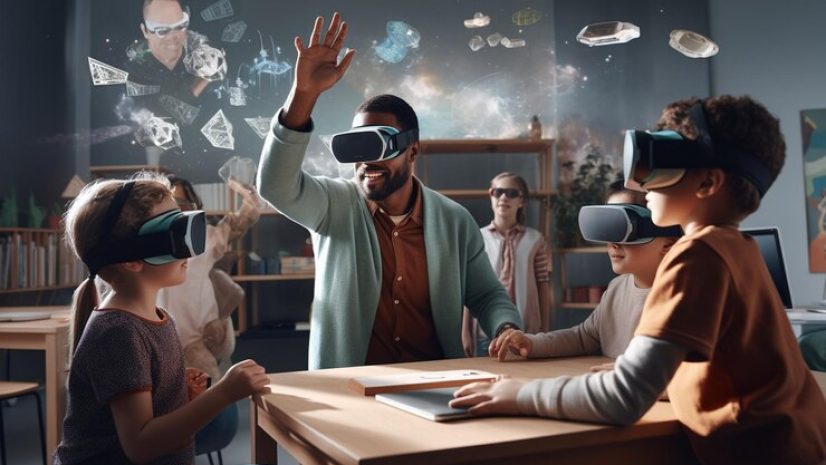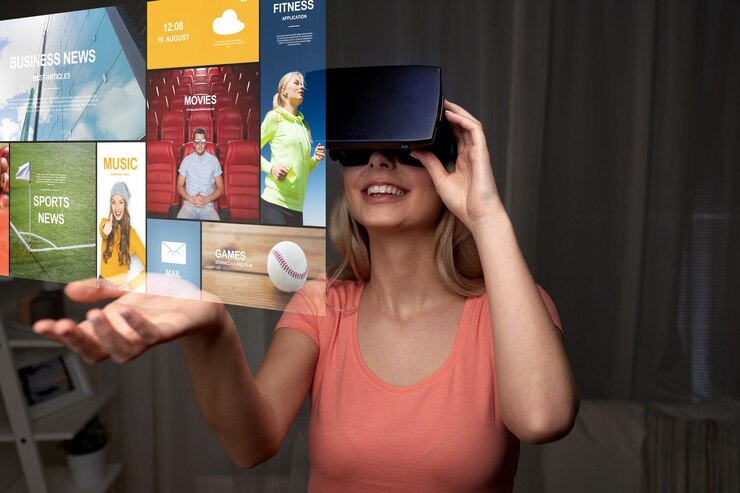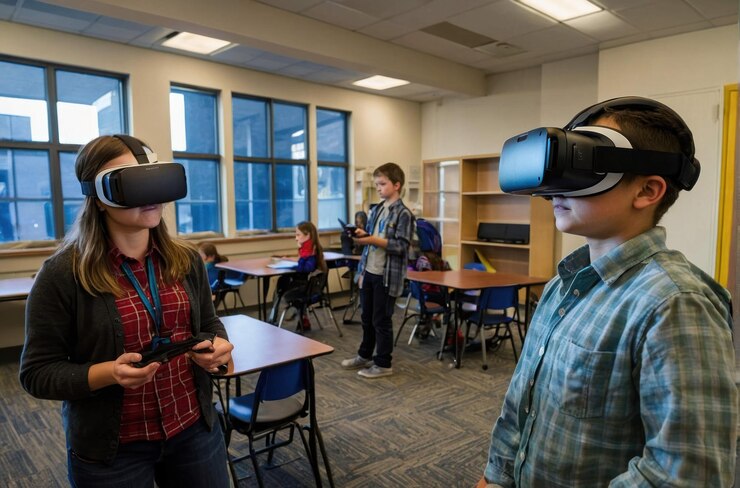
In today’s rapidly evolving business landscape, immersive technologies like Augmented Reality (AR) and Virtual Reality (VR) offer exciting opportunities to enhance operations, engage customers, and drive innovation. However, selecting the right technology for your business requirements is crucial. In this blog, we’ll explore the essentials, advantages, user interaction, cost considerations, ease of usability, and future scalability of both AR and VR for business, along with comparative use cases to help you make an informed decision.
Essentials:
Augmented Reality (AR): AR overlays digital content onto the real world, enhancing users’ perception of their environment. It typically involves the use of smartphones, tablets, or specialized AR glasses.
Virtual Reality (VR): VR immerses users in a completely digital environment, blocking out the real world. It usually requires VR headsets and controllers to interact with the virtual environment.


Advantages:
AR: AR enables businesses to provide contextual information, enhance training and education, facilitate remote assistance, and create interactive marketing experiences.
VR: VR offers immersive training simulations, virtual meetings and collaboration spaces, experiential marketing campaigns, and realistic product prototyping and visualization.


User Interaction:
AR: Users interact with AR experiences through gestures, touchscreens, voice commands, or specialized AR glasses, seamlessly integrating digital content with their physical surroundings.
VR: VR users navigate and interact with virtual environments using controllers, hand tracking, or even full-body motion tracking, immersing themselves in simulated experiences.
Cost Consideration:
AR: AR implementation costs vary depending on factors such as hardware requirements, software development, and integration with existing systems. Mobile AR apps may be more cost-effective than specialized AR hardware.
VR: VR setups can range from standalone headsets to high-end tethered systems, each with its associated costs. Additionally, VR content development may require specialized expertise and resources.


Ease of Usability:
AR: AR experiences can be accessed using everyday devices like smartphones and tablets, making them accessible to a wide audience. However, specialized AR glasses may require training for optimal use.
VR: VR setups often require dedicated hardware, including headsets and controllers, which may have a learning curve for new users. However, once familiarized, users can navigate virtual environments intuitively.
Future Scalability:
AR: As AR technology advances, we can expect improved hardware capabilities, enhanced spatial mapping, and more sophisticated AR applications across industries, from retail and healthcare to manufacturing and logistics.
VR: VR continues to evolve with advancements in hardware, software, and content creation tools. Future scalability lies in broader adoption, increased accessibility, and seamless integration with other technologies.
Comparative Use Cases:
Training and Education:
AR: AR can enhance training programs by overlaying step-by-step instructions or virtual guides onto real-world objects, improving learning retention and comprehension.
VR: VR enables immersive training simulations, allowing users to practice skills in realistic environments without real-world consequences.


Marketing and Branding:
AR: AR marketing campaigns can engage customers with interactive experiences, such as virtual try-on for retail products or location-based AR games for promotional events.
VR: VR can create immersive brand experiences, such as virtual showrooms or product demonstrations, providing customers with a unique and memorable interaction.
Remote Assistance:
AR: AR-powered remote assistance solutions enable technicians to receive real-time guidance and support from experts, reducing downtime and improving service efficiency.
VR: VR-based virtual meetings and collaboration platforms allow teams to collaborate in virtual spaces, regardless of geographical location, fostering communication and productivity.
In conclusion, both AR and VR offer compelling advantages for businesses, depending on their specific requirements and objectives. Whether enhancing customer experiences, streamlining operations, or driving innovation, choosing between AR and VR requires careful consideration of factors such as user interaction, cost, ease of use, and future scalability.
By understanding the unique capabilities and potential use cases of each technology, businesses can harness the power of AR and VR to unlock new opportunities and stay ahead in today’s competitive market.
IS360 Can be Reached at
Sharing is caring!

